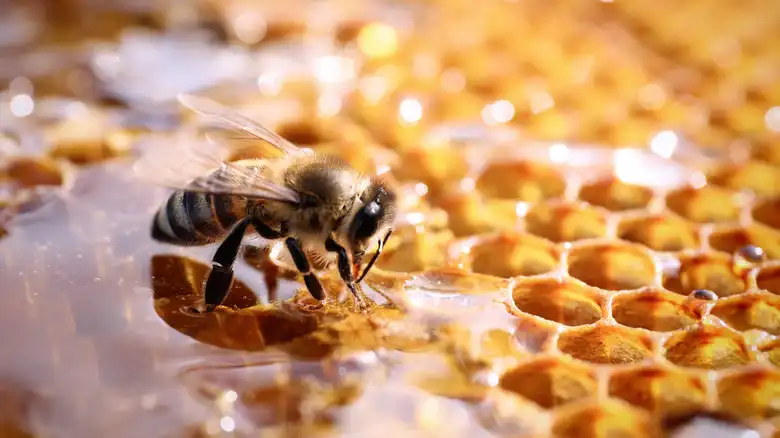
Why Does Honey Crystallize?
If you’ve ever noticed your honey turning thick and grainy over time, don’t worry—it’s a natural process called crystallization. While some people may think crystallized honey has gone bad, it’s actually a sign of pure, natural honey.
The Science Behind Crystallization
Honey is made up of two main sugars: glucose and fructose. The balance between these sugars determines how quickly honey crystallizes. Glucose, in particular, tends to form crystals because it’s less soluble in water than fructose. Over time, glucose separates from the water and forms small crystals, causing the honey to thicken.
Factors That Affect Crystallization
- Flower Source: Honey from flowers rich in glucose, like clover or dandelion, crystallizes faster than honey from flowers higher in fructose, such as acacia.
- Temperature: Honey crystallizes more quickly at cooler temperatures, especially below 50°F (10°C). Storing honey in the fridge accelerates crystallization, while keeping it in a warmer place slows it down.
- Purity: Raw, unfiltered honey crystallizes faster than processed honey because it contains natural particles like pollen and beeswax, which act as seeds for crystals to form.
How to Re-liquify Crystallized Honey
To bring crystallized honey back to its liquid state, simply place the jar in warm water (not boiling) and stir until the crystals dissolve. Avoid microwaving honey, as this can destroy some of its beneficial enzymes.
Embrace the Crystals
Crystallization is a natural process and doesn’t affect the quality or taste of honey. Some even prefer crystallized honey for its creamy texture, which makes it perfect for spreading on toast or stirring into tea.
